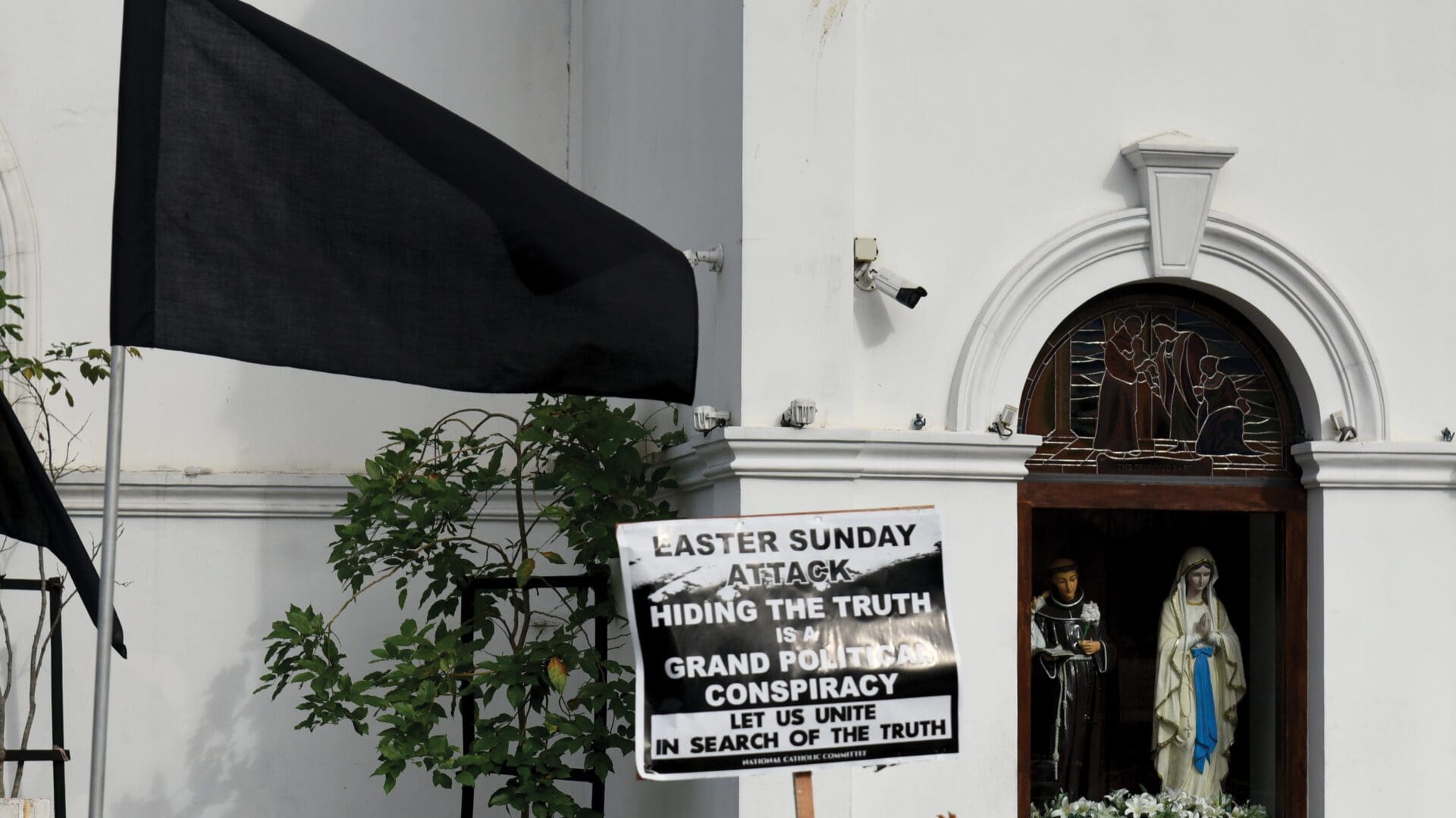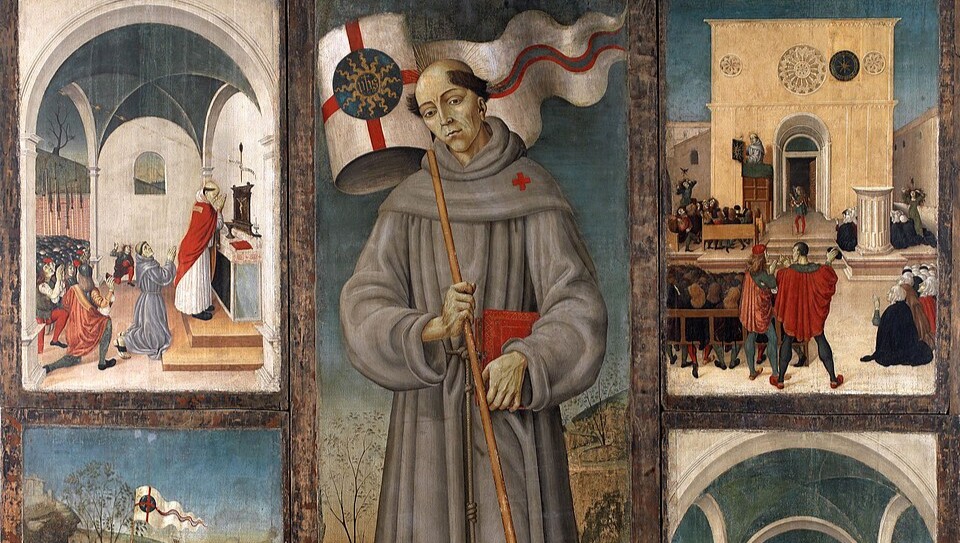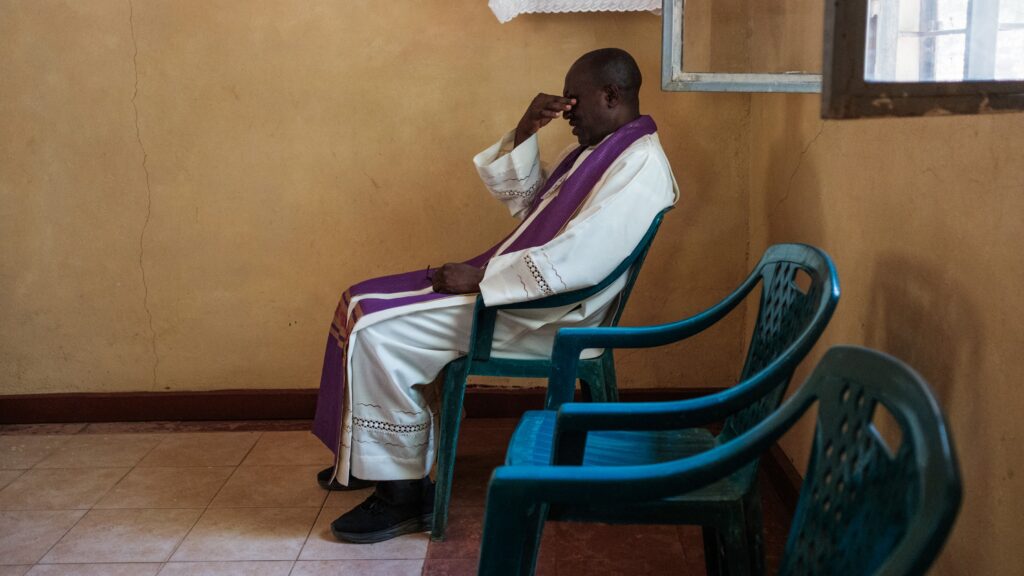This article was published in Vol. 3 No. 2 of the print edition.
Introduction
Anti-Christian violence by jihadi groups across the Muslim world is a neglected issue that elicits little scholarship. The failure to study jihadi attacks against Christians is however belatedly being acknowledged.1 This study provides a corrective to an under-investigated phenomenon. It does so in two parts. First, we look at global jihadi violence against Christians.2 Second, we analyze jihadi violence against Christian communities where religious and strategic interests intersect. Analytical failure to recognize this intersection is a consequence of dysfunctional political correctness.
Anti-Christian jihadi ideology meshes with other factors. Consequently, analysts often fail to recognize the salience of theological hatred driving jihadi attacks on Christians. Though many social, political, and economic factors contribute to this violence, jihadi religious hatred of cross worshipers is an integrative thread. Attacks against Christians are moreover abetted by sectarian conflicts within the Muslim world.
State failure coupled with severe inter-Muslim conflicts stimulates anti-Christian violence. The 2011 Arab Spring’s weakening of states where sectarian divisions converge has devastated Christian communities. The civil wars in Yemen, Syria, and Iraq are indelibly shaped by Sunni and Shia antagonisms that impact Christians. Intra-Muslim conflict in societies with Christian minorities catalyzes jihadi terrorism against a group that IS decries as worshippers of the cross. This cycle of sectarian violence extends across the Muslim world. Cross-Muslim sectarian tensions ignite jihadi anti-Christian violence.
Al Qaeda and IS leaders have condemned a Shia-Crusader-Zionist conspiracy that they believe seeks the destruction of Sunni Islamic culture.3 This construct underscores the prevalence of conspiratorial thinking across the jihadi universe. It also reflects forces (ill-defined colonial borders, US foreign policy, Israel, and globalization) that feed Islamist hostility toward Christians.
Jihadi groups in Egypt, Iraq, Nigeria, and Indonesia consistently target churches during Christian religious holidays.4 The targets, the timing and the rationale expressed in past jihadi attacks convey Islamic theological hatred of Christians. The chart below illustrates jihadi attacks against Christians during Easter, Christmas, and Palm Sunday celebrations. These assaults occur across the globe. The eight attacks listed target Christians during religious holidays. Seven of these assaults focused upon churches. Islamist brutality against Christian communities during religious holidays represents a minority of church attacks where thousands were killed and hundreds of holy places were destroyed.
Islamist extremists see Christendom’s elevation of Jesus into a polytheistic deity as a profane violation of Issa’s historic role in Islam and his contribution to Mohammad’s vision of God’s oneness (tawhid). Christian beliefs about Jesus’ death and resurrection are viewed by jihadis as sacrilegious. Christian celebrations during Christmas and Easter are interpreted as pagan revelry whose profaneness requires violent repudiation. Jihadi hatred of cross worshippers is moreover furthered by millenarianism. Islamic eschatological traditions foretell fitnah or inner struggle in the Muslim world. These interior conflicts are viewed by extremists as presaging an apocalyptic war against the Christian West. Based on oral and written accounts (hadith), Mohammad foretells Jesus’s role in assisting the Mahdi in the destruction of Satanic Christian forces to facilitate Islam’s prophesied global expansion.
| COUNTRY | RELIGIOUS HOLIDAY | LETHALITY OF ATTACKS | JIHADI GROUP RESPONSIBLE FOR ATTACK |
| Indonesia | Christmas Eve Church bombings (24 December 2000) | 14 Dead | Jemaah Islamiyah, linked to the Al Qaeda Network |
| Nigeria | Christmas Eve (24 December 2010) | 80 Killed | Boko Haram |
| Nigeria | Easter (8 April 2012) | 50 Killed | Boko Haram |
| Kenya | Pre Easter celebrations (3 April 2014) | 148 Killed in a series of attacks | Al Shabab – Somali affiliate of Al Qaeda’s Network |
| Pakistan | Easter (27 March 2016) | 70 Killed | Pakistani Taliban linked to Islamic State Network |
| Egypt | Palm Sunday (8 April 2017) | 45 Killed | Wiliyat Sinai linked to Islamic State Network |
| Sri Lanka | Easter (21 April 2019) Attacks on 3 churches | 151 Killed | Sri Lankan militants linked to Islamic State Network |
| Nigeria | Pentecostal Sunday Church Attacks (5 June 2022) | 50 Killed | Boko Haram |
Apocalypticism shapes the Islamic State’s worldview.6 The movement’s integration of Islamic eschatology with jihadi war strategy is a development predicted by Jean-Pierre Filiu, who expressed fear about the destructive consequences of this intermarriage.7 Radical Islamists connect Christendom’s worship of Jesus with Shiism’s veneration of the Prophet’s son-in-law Ali, linking the struggle against polytheistic heterodox Muslims with the fight against Christians. Al Qaeda and the Islamic State (IS) furthermore see Sunni Islam as being under attack by a Crusader-Zionist-Rafidah order. By combating Shia and aligned groups, Sunni jihadis are fighting Crusader designs to destroy the Islamic world.
Jihadi Targeting of Christian Communities Across the Globe
Islamic extremists in Asia, Africa, and the Middle East have killed tens of thousands of Christians. Their targeting of Christians is a global problem characterized by attacks on churches in Sri Lanka, Pakistan, Egypt, Nigeria, the Philippines, Iraq, Syria, and Indonesia.8 The 2019 Easter Sri Lanka attacks that killed 151 Christian parishioners in three church bombings by IS-aligned suicide bombers was heralded by the IS media organs as halal.
Boko Haram (BH) is notorious for anti-Christian violence through attacks against churches.9 Despite its dissolution into contending groups aligned with Al Qaeda and the IS, their assault on Lake Chad’s Christian communities continues.10 BH’s late leader Abubakar Shekau expressed this animosity succinctly: ‘Christians should know that Jesus is a servant and prophet of God. He is not the son of God. The religion of Christianity you are practicing is not a religion of God—it is paganism. God frowns at it. What you are practicing is not religion.’11
‘State failure coupled with severe inter-Muslim conflicts stimulates anti-Christian violence’
His view may account for the movement’s slaughter of Christians during their high holy days. BH’s war against Christians is connected to its grievances against apostate Muslims. The movement’s assault against Sufi and Shia Muslims is justified by their contamination by Western colonial-era secularism. Intra-Muslim violence stimulates the jihadi targeting of Christians who, like the Sufi and Shia, are susceptible to charges of polytheism. Intra-Muslim tensions incubate jihadi violence against Christians. The pattern holds across the Islamic world where Muslim extremist violence against Sufis and Shia incubate brutality against Christians. Between 2010 and 2014, BH launched fifteen attacks against churches, bombed five mosques, and assassinated many Muslim clerics.12
Jihadist attacks against Christians during high holy days are recognized. The House Committee on Worldwide Persecution of Christians documents church attacks in the Muslim world during religious celebrations. Church attacks in Nigeria, Iraq, Syria, Pakistan, Indonesia, and Egypt reflect jihadi hatred of Christians.13 For some Islamist revivalists, Christian minorities living in Allah’s domain are a disease to be eradicated. BH’s propensity for church attacks and diatribes against Christians is, however, evidence of an enduring hatred of cross worshipers.14 BH’s violence against apostate Muslims and Christians cannot be divorced. During its development, the network alternated between attacking mosques and churches.
BH’s anti-Christian sentiment predates the IS, whose propaganda inveighs against apostate Muslims and Christian cross worshippers. This religious antipathy is reflected in IS’s ethnic cleansing campaign in Iraq and Syria. Though IS’s takfiri campaign against Shia Muslims is widely recognized, few in academic circles acknowledge the savagery of its violence against Christian communities.15
Al Qaeda’s and IS’s attacks against Sufi communities in Egypt and Mali cannot be attributed to colonial legacies, or blamed on globalization, poverty, and US foreign policy. None of these reasons account for the synergy created when intra-Muslim conflicts catalyze jihadi violence against Christians. IS’s Sinai affiliate in Egypt has alternated between attacks against Sufi mosques and Coptic churches. Between 2016 and 2017, IS-Sinai bombed a Sufi Mosque, killing 150 people, and launched attacks against Coptic churches in Cairo, Tanta, and Alexandria, killing close to one hundred people.16
Driving this violence is a Salafi determination to eviscerate apostasy. Abetting this development are colonial legacies, globalization, and US military intervention in the Middle East. The interconnections are reinforcing. Collectively they impel jihadi groups to re-imagine a future free of apostasy, which can only be eradicated by resurrecting transnational Islamic governance.
BH’s network and IS affiliates have extended their operations across West Africa. Cameroon and Burkina Faso have also seen jihadi anti-Christian violence and church attacks. Jihadi violence intersects where religion and illicit opportunities converge.17 Corruption, failed statehood, and criminality are especially acute in African countries with severe tribal and sectarian cleavages. Equatorial Africa is a major fault line where Christian–Muslim tensions have historically been acute, and it is there that IS’s global network has expanded in its post-caliphate stage. The IS branch in Mozambique targets churches and Christian communities to deadly effect.18 The growth of violent Islamist insurgent groups in Africa is driven by many factors where in-group/out-group identities matter.19 The dramatic rise of the IS branch in the Democratic Republic of Congo has similarly been characterized by church attacks during Sunday services and a systematic anti-Christian campaign.20
Africa is not alone in witnessing jihadi rage against Christians. The rise of Al Qaeda in Iraq (AQI) and the IS evolution saw a significant rise in religious violence that convulsed Shia, Yazidi, and Christian communities in Iraq. Syrian Druze, Alawite, and Christian communities have been similarly affected by AQI- and IS-directed sectarian violence.
Al Qaeda and IS franchises stimulate religiously directed violence by capitalizing on localized grievances against Christian communities. Church attacks during religious holidays have been committed by AQ and IS affiliated branches. Notorious for attacking Shia mosques, they have also systematically assaulted churches across the country. Between 2004 and 2013, AQI launched over 600 attacks against churches that killed 94 people and wounded hundreds.21 Attacks on Iraqi Christian communities reflect the sectarian warfare promoted by AQI’s founder Abu Musab al-Zarqawi that then expanded under his successors. In October 2010, Islamic State of Iraq (ISI) militants attacked a Baghdad church during Sunday evening mass services killing 58 people.22 AQI’s war against Christians was driven by its view that Shia and Crusader forces had aligned to destroy Sunnis.
After the Arab Spring, Al Qaeda’s regional franchises grew in failed states convulsed by sectarian cleavages that catalyzed religious intolerance against heterodox Muslims and Christians. This evolution has occurred across the Middle East, Africa, and South Asia. Throughout the Muslim world, Salafi-jihadi groups seek to destroy Muslim apostasy in a war that has profound significance for Christian minorities.
The global expansion of jihadi sectarian cleansing is alarming. The Global Terrorism Data Base has been documenting a spectacular rise in violence against religious institutions after 9/11, the 2003 Iraq War, and especially after the Arab Spring.23 All three events incubated theologically directed violence. The rise of Al Qaeda in Iraq and its IS successor are directly connected to sectarian conflicts in the Middle East and Africa, and the resulting anti-Christian violence.
Jihadi extremists have devastated Christian communities across the Middle East. A 2017 UK White Paper reports that since 2003, Iraq’s Christian population has declined from 1 million to around 200,000 people.24 Much of this exodus is due to jihadi violence. For example, IS conducted a mass expulsion campaign when they captured and held a swath of north-east Iraq between 2014 and 2016. The massacre and forced deportation of hundreds of thousands of Christians was connected to the IS’s assault against Shia Muslims and the Yazidi population that reached genocidal proportions.
Systematic persecution of Christians across the Middle East is also seen in Egypt and the Palestinian territories.25 Once a fifth of the Middle East’s population, Christians are now a scant three per cent. Within the region, only Iraqi Kurdistan, Jordan, and Lebanon offer any protection for them.
The prevalence of anti-Christian violence has deep religious roots. Though jihadi groups vary in their hostility toward worshipers of the cross, violence against Christian communities is constant. It reached a threshold in Iraq with IS’s genocidal behaviour. Across Iraq and Syria, thousands of Christians were killed and hundreds of churches and monasteries were destroyed. In short order, almost two millennia of Christian presence was eviscerated.
The IS’s offer to protect Christian communities through the payment of a special tax (jizya) was viewed by Iraqi Christians as extortion. By resorting to this practice, IS hoped to expunge a subpopulation it despised. Despite the offer of special protection, jizya was not honoured, and Christians were killed, tortured, enslaved, raped, and expelled. One Hudson Institute study described IS jizya offer as a hoax and a blatant attempt at extortion.26 Vacated Christian properties were expropriated by IS. Christians fleeing to Iraqi Kurdistan had their belongings confiscated by IS border guards.
The religious roots of this anti-Christian violence are embedded in the jihadi movement. Anti-Christian bigotry is shared by Al Qaeda and the IS. Al Qaeda Central has often struggled to control the sectarian violence waged by its regional branches.27 Whether it be against Shia Muslims in Iraq, Druze in Syria, or Sufis in Mali, Al Qaeda’s calls for tolerance have little impact. Violence against apostate Muslims is innately connected to the persecution of Christians by jihadis. This pattern is worldwide.
South Asia has historically featured jihadi anti-Christian violence in Indonesia and the Philippines. Indonesia has witnessed repeated jihadi attacks against Christian churches by AQ- and IS-aligned militants. Besides Jemaah Islamiyah’s 2000 Christmas Eve assault in Indonesia, IS supporters have attacked churches in the Philippines and Sri Lanka, some timed to take place during religious holidays, to kill as many Christian parishioners as possible.28 One Indonesian attack featured a family of suicidal jihadists aligned to IS’s local network who bombed three churches, killing dozens.29
IS is also active in the southern Philippines, attacking churches. In January 2019 IS militants attacked a Catholic cathedral in Jolo, killing 20 parishioners and wounding hundreds. The attack was orchestrated by the IS-aligned Abu Sayaf movement, which in 2017 occupied the southern city of Marawi, inviting a bloody five-month siege that killed over a thousand people in a failed bid by IS supporters to create a Philippine wilayat.30 IS’s South Asia network moreover executed the IS’s most lethal terrorist assault. The Sri Lanka 2019 Easter Day attacks killed 151 people attending services at three churches.31 The assault was interpreted as retaliation for Australian terrorist Brandon Tarrant’s slaughter of 50 Muslims at a mosque and Islamic cultural centre in Christchurch, New Zealand, months earlier. The Christchurch mosque attack led IS spokesman Abu Hassan al-Muhajir to urge the caliphate’s supporters to retaliate against Christians. Al-Muhajir’s threat was seconded by IS’s Arabic-language Al Naba weekly magazine in its 174th issue, which commanded its soldiers to make the crusaders ‘pay a price in their temples while they realize their incredulous rituals’.32
The IS’s targeting of churches reflects a hostility toward a religion it sees as a polytheisticsect. Aymenn Jawad al-Tamimi, for example, argues that IS justifies its killing of Christians for they are muharibeen believers in Christ who are not subservient to Islamic authority and are consequently in a state of war with Islam.33
‘Jihadi violence targeting Christian houses of worship during religious holidays explicitly conveys theological hostility’
The jihadi retaliatory strikes for the mosque massacre came a month after al-Muhajir’s statement. Striking on Easter Day, 21 April 2019, eight IS-aligned National Throwheeth Jama’ath (NTJ) militants launched suicide bombing attacks across Sri Lanka targeting three churches during mass services and three luxury hotels hosting Western tourists. The scale of the attacks and the targeting of Sri Lanka’s small Christian community were unprecedented even for a county rocked by decades of ethnic civil war. Over two hundred and fifty people were killed and more than five hundred were wounded. The assaults were celebrated on IS jihadi social media sites that described the attacks as ‘punishment’ for the Christchurch mosque and Islamic centre attacks. Capitalizing on the Sri Lankan attacks, the late IS leader Abu Bakr al-Baghdadi appeared in a video praising the church and hotel massacres, remarking that more attacks against crusaders were forthcoming. His appearance symbolized IS’s resilience, and inspired the movement’s followers to believe that a new terror war was about to commence.
The Synergy between Religious, Strategic, and Tactical Forces in Jihadi Attacks Against Christians
For many analysts, the strategic forces behind the 2019 Easter attack outweighed obvious religious explanations.34 Targeting three churches during a Christian holiday, coupled with statements expressing anti-Christian hatred, had little significance for them. The gravity of the attacks that targeted 150 Christians celebrating Easter services demanded an alternative reality that downplayed religious motivations. Some blamed Islamophobia for the attacks. This narrative blamed past Buddhist attacks against Sri Lankan Muslims for creating an incendiary sectarian climate. This begs the question of why Christians were targeted, and why during Easter? Other analysts pointed to the targeting of Western tourist hotels and large numbers of parishioners celebrating Easter as evidence of strategic motivations. According to this viewpoint, IS needed to kill large numbers to gain relevance after the fall of its remaining stronghold in Syria. The operation’s lethality and its rationale are consistent with anti-Christian ideological hatred and the IS’s strategic logic. They are complementary. Which trumps the other is impossible to discern.
The academic controversies bred by Palestinian suicide bombers are helpful here. Palestinian martyrdom operations are often treated in a binary way, with either religion or strategy dominating. Robert Pape’s influential study of Hamas suicide bombers dismissed religious motives and prioritized strategic and rational explanations.35 His work invited criticism. Mohammad Hafez, for example, argues that many forces (rational, cultural-religious, and strategic) congeal to form an integrated dynamic that cannot be parsed.36 Efforts to disentangle them demonstrate analytic bias often coloured by political correctness. The impulse to dismiss religious and theological sources as driving forces for jihadi violence is recognized. Jefferey Bale and Shmuel Barr have argued that this proclivity skews academic inquiry and distorts research.37 Though Sunni jihadi animosity toward Shia and Sufi Muslims is acknowledged, there is a curious reluctance to see this religious bigotry extended to Christians.
Attacks on Christians are commonly viewed as outrage against past colonialism or resistance to US foreign policy. Jihadi usage of the term crusader is stripped of its religious significance and is interpreted as a critique of American military intervention. Islamist extremist targeting of Egyptian Copts is viewed as a reaction to Christian support for repressive anti-Islamist regimes. After the military’s overthrow of the Muslim Brotherhood government in 2012, hundreds of Christian churches were burned, and thousands of Christians were assaulted by Islamist extremists.38
This Islamist violence against Christians is interpreted almost exclusively as retaliation for Coptic Pope Tawadros II’s support for General El-Sisi’s military regime. Yet jihadi targeting of Christians predates Morsi’s overthrow. Islamic extremist attacks against churches have occurred throughout Egypt’s post-colonial state. Jihadi violence against Christians was most pronounced during Morsi’s Muslim Brotherhood government, whose release of Islamist prisoners is attributed to attacks against Christian communities and their places of worship. Jihadi attacks against Egyptian churches by AQ- and IS-linked groups have occurred for decades. AQ-linked extremists have repeatedly targeted churches and Christians. This development was recognized by Al Qaeda’s late emir Ayman al-Zawahiri, who felt impelled to address the impropriety of jihadi attacks against churches while threatening Christians for their support for the El-Sisi regime.
Religious hatred matters. Jihadi violence targeting Christian houses of worship during religious holidays explicitly conveys theological hostility. This terrible reality is unpalatable for some analysts, who remain content to blame other forces. This obfuscation defies logic. Jihadi violence against Christians occurs across the Muslim world in countries with different colonial histories and exposure to US foreign policy. It is, moreover, intimately tied to intra-Muslim tensions and sectarian violence. Recognizing the religious motives behind Sunni jihadi violence against Shia, Druze, and Muslim apostates while denying the salience of religious animosity toward Christians is untenable. Jihadi sectarian cleansing of Christians falls within the same category as their slaughter of heterodox Muslims. Efforts to separate these groups reflect the corrosive influence of political correctness which, given the unfolding tragedy, is unsustainable.
NOTES
1 Byrnjar Lia and Matilde Becker Aarseth, ‘Crusader Hirelings or Loyal Subjects: Evolving Jihadi Perspectives on Christian Minorities in the Middle East’, Islam and Christian–Muslim Relations, 33/3 (2022), 255–280; Katalin Petho-Kiss, ‘Countering Terrorist Acts against Christian Places of Worship’, Perspectives on Terrorism, 14/3 (2020), 74–86.
2 Huma Haider, ‘The Persecution of Christians in the Middle East’, Helpdesk Report (UK Department for International Development, 2017), https://opendocs.ids.ac.uk/opendocs/bitstream/handle/20.500.12413/13055/K4D_HDR_Persecution%20of%20Christians%20in%20the%20 Middle%20East.pdf?sequence=142&isAllowed=Congressional Hearing Testimonies.
3 Abu Mohammad Al-Adnani, ‘Indeed Your Lord Is Ever Watchful’ (2014), https://scholarship.tricolib.brynmawr.edu/bitstream/handle/10066/16495/ADN20140922.pdf.
4 Yonas Dembele, ‘Egypt: A Church under Siege: Egyptian Christians and IS’, Open Doors International Research Unit (2017), EGYPT-A-Church-under-Siege-WWR-2017.pdf (opendoorsanalytical.org); Ewelina Ochab and Kelsey Zorzi, ‘Effects on Terrorism and Human Rights: ISIS/Daesh and Boko Haram’, Anti-Defamation League Report (2016), https://docslib.org/doc/1623270/isis-daesh-and-boko-haram-ewelina-ochab-and-kelsey-zorzi-report.
5 Raymond Ibrahim, ‘Why for the UN, Is One Mosque Massacre So Much Worse than Countless Church Massacres?’, The Gatestone Institute (2022), www.gatestoneinstitute.org/18532/mosque-chruch-massacres; Petho-Kiss, ‘Countering Terrorist Acts against Christian Places of Worship’.
6 William McCants, The ISIS Apocalypse: History, Strategy and Doomsday Vision of the Islamic State (New York: McMillian, 2015).
7 Jean-Pierre Filiu, Apocalypse in Islam (Berkley: University of California Press, 2011).
8 Ibrahim, ‘Why for the UN, Is One Mosque Massacre So Much Worse than Countless Church Massacres?’.
9 Lang Michael Kpughe, ‘Christian Churches and the Boko Haram Insurgency in Cameroon: Dilemmas and Responses’, Religions, 8/8 (2017), 143, www.mdpi.com/2077-1444/8/8/143/htm.
10 Jacob Zenn, Unmasking Boko Haram: Exploring Global Jihad in Nigeria (New York: Lynne Rienner, 2020).
11 Benjamin Eveslage, ‘Clarifying Boko Haram’s Transnational Intentions: Using Content Analysis and Public Statements in 2012’, Perspectives on Terrorism, 7/5 (2013), 47–76.
12 Ioannis Mantzikos, ‘Boko Haram Attacks in Nigeria and Neighboring Countries: A Chronology’, Perspectives on Terrorism, 8/6 (2015), 63–81.
13 Committee on Foreign Affairs, 130th Congress, Serial No. 113–175, 11 February 2014, www.foriegnaffairs/house.gov.
14 Eveslage, ‘Clarifying Boko Haram’s Transnational Intentions: Using Content Analysis and Public Statements in 2012’.
15 Nina Shea, ‘The ISIS Genocide of Middle Eastern Christian Minorities and Its Jizya Propaganda Ploy’, The Hudson Institute (21 July 2016), www.hudson.org/national-security-defense/the-isis-genocide-of-middle-eastern-christian-minorities-and-its-jizya-propaganda-ploy.
16 Dembele, ‘Egypt: A Church under Siege: Egyptian Christians and IS’.
17 Anouar Boukhars, ‘The Logic of Violence in Africa’s Extremist Insurgencies’, Perspectives on Terrorism, 14/ 5 (2020), 117–129.
18 Tim Lister, ‘The March 2021 Palma Attack and the Evolving Jihadi Terror Threat to Mozambique’, CTC Sentinel, 14/4 (2021), 19–27; Emelie Estelle and Jessica Darden, ‘Combating the Spread of the Islamic State in Africa: Assessment and Recommendations for Mozambique’, American Enterprise Institute Critical Threats, www.aei.org/wp-content/uploads/2021/02/Combating-the-Islamic-State%E2%80%99s-Spread-in-Africa-1.pdf.
19 Boukhars, ‘The Logic of Violence in Africa’s Extremist Insurgencies’.
20 Tara Candland et al., ‘The Islamic State in Congo’, George Washington University Program on Extremism (March 2021), https://extremism.gwu.edu/sites/g/files/zaxdzs2191/f/The%20Islamic%20State%20in%20 Congo%20English.pd; ‘DR Congo Blames Rebels for Kasindi Church Bombing’, BBC News (15 January 2023), www.bbc.com/news/world-africa-64282053; Brenda Mugeci Githing’u and Tore Refslund Hamming, ‘“The Arc of Jihad”: The Ecosystem of Militancy in East, Central and Southern Africa’, International Centre for the Study of Radicalization (2021), https://icsr.info/wp-content/uploads/2021/11/ICSR-Report-The-Arc-of-Jihad-The-Ecosystem-of-Militancy-in-East-Central-and-Southern-Africa.pdf.
21 Githing’u and Hamming, ‘“The Arc of Jihad”’.
22 Nimrod Raphaeli, ‘The Plight of Iraqi Christians—An Update Following the Attack on the Baghdad Church’, MEMRI (2010).
23 ‘Global Terrorism Database Attacks on Religious Institutions’, www.start.umd.edu/gtd/search/Results.aspx?search=church+attacks&sa.x=33&sa.y=20.
24 Haider, ‘The Persecution of Christians in the Middle East’.
25 Justin Reed Weiner, ‘Middle Eastern Christians: Battered, Violated and Abused, Do They Have Any Chance for Survival?’, Jerusalem Center for Public Affairs (2016), https://jcpa.org/text/book.pdf.
26 Shea, ‘The ISIS Genocide of Middle Eastern Christian Minorities and Its Jizya Propaganda Ploy’.
27 Anthony Celso, Al Qaeda’s Post 9-11 Devolution: The Failed Jihadist War against the Near and Far Enemy (New York: Bloomsbury Press, 2014).
28 Shashi Jayakumar, ‘The Islamic State Looks East: The Growing Threat in Southeast Asia’, CTC Sentinel, 10/2 (2017), 27–33.
29 James Brandon, ‘Dangerous Amateur: Indonesia’s New Generation of Jihadists’, Terrorism Monitor, 16/11 (2018), 8–11.
30 Jacob Zenn, ‘The Islamic State Provinces in the Peripheries: The Pledges from Boko Haram and Abu Sayaf and Maute Group in the Philippines’, Perspectives on Terrorism, 13/1 (2019), 87–104.
31 Amarnath Amarasingam, ‘Terrorism on the Teardrop Island: Understanding the Easter 2019 Attacks in Sri Lanka’, CTC Sentinel, 12/5 (2019), 1–10. 32 Al Naba, the-islamic-state-al-nabacc84e28099-newsletter-174.pdf (jihadology.net, 2019).
33 Aymenn Jawad Al-Tamimi, ‘The Sri Lankan Attacks and the Islamic State’s Strategic Logic’, Blog Post, (2019), www.aymennjawad.org/2019/04/the-sri-lanka-attacks-and-islamic-state-logic#continued.
34 A. R. M Imtiyaz, ‘The Easter Sunday Bombings and the Crisis Facing Sri Lanka’s Muslims’, Journal of Asian and African Studies, 55/1 (2019), 3–16; Amresh Gunasingham, ‘Sri Lanka Attacks’, Counter Terrorism Trends and Analysis, 11/6 (2019), 8–13.
35 Robert Pape, ‘The Strategic Logic of Suicide Terrorism’, American Political Science Review, 97/3 (2003), 343–365.
36 Mohammad Hafez, ‘Rationality, Culture and Structure in the Making of Suicide Bombers: A Preliminary Theoretical Synthesis and Illustrated Case Study’, Studies in Conflict and Terrorism, 29 (2006), 165–185.
37 Jeffrey Bale, ‘Denying the Link between Islamist Ideology and Jihadist Terrorism: Political Correctness and the Undermining of Counterterrorism’, Perspectives on Terrorism, 7/5 (2013), 5–46; Shmuel Barr, ‘The Religious Sources of Islamic Terrorism’, Policy Review (June/July 2004), 27–37.
38 Jason Brownlee, ‘Violence against Copts in Egypt’, Carnegie Endowment for International Peace (2013), https://carnegieendowment.org/files/violence_ against_copts3.pdf.
Related articles:








